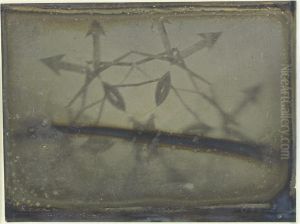Henry Draper Paintings
Henry Draper was an American doctor, astronomer, and pioneering astrophotographer, born on March 7, 1837, in Prince Edward County, Virginia. He was the son of John William Draper, a notable scientist and professor who took one of the first photographs of the moon. Henry Draper's education was robust; he graduated from the University of New York in 1857 and later received his medical degree from the same institution in 1858.
Despite his medical background, Draper's primary interest lay in the field of astronomy, following in his father's footsteps. He became an accomplished amateur astronomer and is most renowned for his work in astrophotography. Draper's contributions to the field were groundbreaking; he was the first to photograph the spectrum of a star (Vega), in 1872, thereby demonstrating the potential for the chemical analysis of stars through spectral evidence.
Draper's fascination with photographic techniques and celestial phenomena led him to develop new methods and instruments for astrophotography. His work laid the foundation for the field of spectroscopy, which would become a fundamental tool for astrophysics. He was also instrumental in photographing the transit of Venus in 1874, a significant event for refining measurements of the solar system.
Tragically, Henry Draper's life and career were cut short when he died on November 20, 1882, at the age of 45. Despite his premature death, Draper's legacy persisted. His wife, Anna Draper, dedicated her life to memorializing his work, culminating in the Henry Draper Catalogue, which extended his spectral classification of stars and was published posthumously. His innovations and contributions to the field of astrophotography remain influential, and he is remembered as a pioneer who bridged the gap between astronomy and photography.
